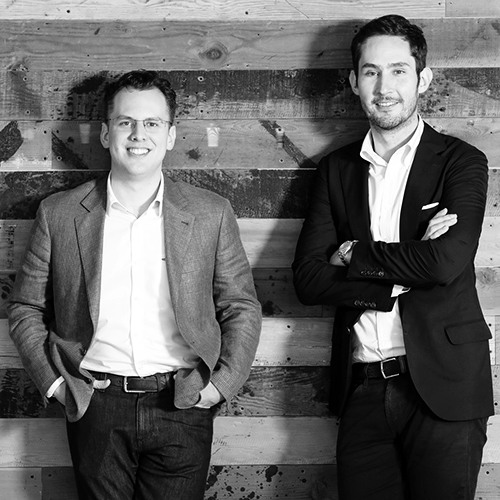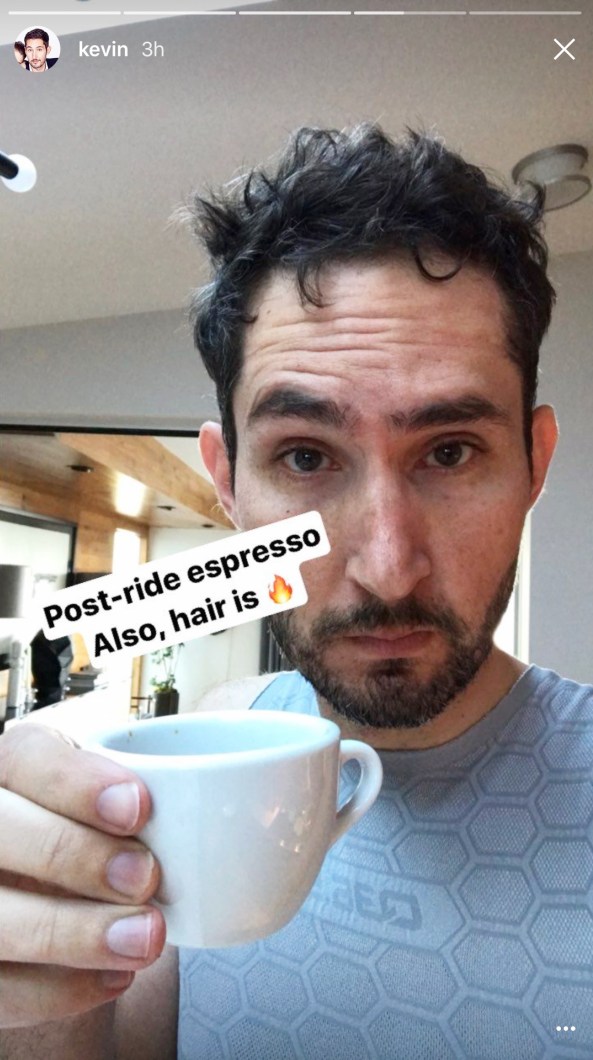How Instagram Changed—Before It Had To
Sacrilege! In the spring of 2015, Instagram’s leadership was cautiously exploring whether to make a major change to its wildly popular image-sharing service—one that would alter how the company defined itself. At issue: Should Instagram remove the restriction that all posted photos and videos be square?
A debate about squares versus rectangles might seem pedantic, even silly. But along with the app’s hipster filter effects and its Polaroid-esque icon, that square border had been an Instagram signature, akin to Twitter’s 140-character count. The shape so typified Instagram’s elegantly minimalist sensibility that Ian Spalter, newly arrived at the time from YouTube as head of design, was aghast at the idea of abandoning it. “I just started here,” he remembers thinking, “and now you’re breaking everything?”
That August, Instagram steeled itself and began allowing users to post photos and videos at any aspect ratio. But rather than being freaked out by the change, Instagram’s shutterbugs immediately began producing a greater variety of imagery, in higher quantities than ever.

Looking back at the company’s hard-to-shake loyalty to the original square format, “we might have been too precious,” admits Instagram cofounder and CEO Kevin Systrom this January at the company’s shiny new three-story headquarters in Menlo Park, California, which are decorated with jumbo-size Instagram photos and located a mile and a half from its former office on Facebook’s main campus. His team’s allegiance to its original design, he concluded, had been holding it back.
It’s easy to understand why the company was hesitant to mess with its formula. The story of how Systrom and cofounder Mike Krieger went from coding Instagram 1.0 at a tech incubator on San Francisco’s Pier 38 in 2010 to selling their startup 18 months later to Facebook for more than $700 million remains a Silicon Valley fairy tale. Today, thanks to the musicians, athletes, and other celebrities who use it, Instagram is a pop-culture powerhouse. It has been one of the 15 most downloaded apps every day for more than five years, and its value to Facebook—once accused by pundits of overpaying—has been estimated by analysts to be $35 billion.
“A big change happened when we decided to go non-square,” says Systrom, who, with his close-cropped beard, chocolate-colored quilted blazer, and wooden water bottle, has a sense of style befitting the cocreator of a tool for sharing beautiful photography. The decision not only gave the company more confidence to change its app, but also inspired it to go much further in evolving the service. Systrom realized that if the company waited until there were signs that the app was in dire need of revamping, it would likely be too late.
Even designer Spalter, initally taken aback by the possibility that an Instagram photo might not have to be square, now looks at the shift as a moment when the company came to understand itself better. “It gave us more permission to try new things, to solve some problems we hadn’t invested in solving,” he says.

Embracing change when everything’s clicking may be one of the hardest challenges in business. But Instagram has now reimagined itself on multiple fronts. It’s built out Instagram Stories, an all-new element that puts it squarely in competition with Snap’s Snapchat. It took the feature only five months to rack up 150 million users each day, the same number that Snapchat required a half-decade to reach. (Snap reported 158 million daily active users in December.) The fact that Stories took off so swiftly presumably helps explain why Facebook has since incorporated similar features into WhatsApp and Messenger, and is testing a version inside the Facebook app.
Instagram has also ramped up the ambition of preexisting features such as its built-in direct-messaging service and tweaked its classic photo- and video-sharing capabilities to allow for up to 10 items in one post. It even rolled out a redesign that ditched that cherished Polaroid-inspired icon, a transition that some users found more jarring than all the evolution going on inside the app itself.
Most important, the company has pulled all this off in a way that’s both kept existing fans engaged and attracted new recruits at an even faster pace. The app, which announced in September 2015 that it had doubled in 18 months to 400 million monthly users, revealed in December 2016 that it added another 200 million in 15 months to close out the year with 600 million. (Snap does not reveal its monthly active users, so Snapchat and Instagram can only be compared directly using Stories.)
Among the things that Instagram has questioned about itself was its once-fierce proud dedication to lean staffing, which it clinged to long after becoming part of Facebook. “Building out a senior team was probably the best thing we could have done for the company,” says Systrom. “You just have more hands on deck to scale the people side of the organization.” Along with YouTube’s Spalter, key executives who joined in 2015 and 2016 include head of product Kevin Weil (who had held the same job at Twitter), and director of engineering James Everingham and Stories product manager Robby Stein (both ex-Yahoo).
Just three years ago, the company had roughly 50 employees, up from 13 at the time of the acquisition. Now it has more than 500, with 40-plus positions open in areas from engineering to marketing to public policy. Already, it’s eyeing the building across the parking lot from its new headquarters for future expansion.
Observers might be tempted to assume that Snapchat’s emergence as a rival for teens’ and twentysomethings’ attention is what motivated Instagram to reimagine itself to such spectacularly successful effect. Systrom, predictably, doesn’t position it that way. The threats he sees are more existential.
Every recent change the company has wrought, he says, sprang from the team asking itself: What would the company do if Instagram as we knew it suddenly stopped mattering? “Not that it’s going to,” Systrom quickly clarifies. “But what if? What kind of decisions would you make? That unlocked a torrent of creativity. It allowed us to be more risk-seeking than we would have been in the past. Ironically, it would almost be riskier to not do it.”

Beyond Photography
“We’re not a photo-sharing company.”
To hear this from Systrom is a tad startling, given that Instagram became synonymous with photo sharing within months of its debut. But as the app closed in on serving a half-billion users worldwide, its designers came to believe that its purposefully stripped-down experience, originally built with artful photos in mind, was too limiting and formal. What had once been a creative constraint had become a straitjacket.
Today, Systrom says, the company’s mission is “strengthening relationships through shared experiences.” The idea underpinning this goal is that Instagram should offer users a more overt and unvarnished way to connect through the universal language of images—to broadcast moments and not just just-so snapshots. “A lot of times you’re on the way to the airport, or you’re at a campground, and [a photo] doesn’t need to endure, because you’re not actually sharing a photo: You’re just communicating a status update of what you’re doing,” says product manager Stein, who has only been with Instagram since May 2016 but fell in love with the app as one of its original beta testers. “That [emphasis on experiences] wasn’t always clear to us,” Systrom says. “It wasn’t always clear to Facebook. And it wasn’t always clear to the world.”

Instagram could have introduced its new interest in visual communication in any number of ways, but the company spent four months doing something nobody anticipated: It cloned a key Snapchat feature more or less in its entirety. Like Snapchat Stories, Instagram Stories, which debuted in August 2016, offers a set of tools that let you mash up full-screen still images and video snippets with overlaid text annotations and doodles—a medium more likely to result in something that feels endearingly rough-hewn. And just to reinforce the point that you’re not creating . . . art, both Instagram Stories and their Snapchat forebears disappear after 24 hours.
Now, companies that blatantly knock off the competition often wind up with something that consumers couldn’t care less about. Just ask Instagram’s parent company, Facebook, which launched two Snapchat wannabe apps—2012’s Poke and 2014’s Slingshot—that were thuddingly unsuccessful.
Instagram Stories has avoided that fate by preserving a recognizably Instagrammy feel. When Systrom and Krieger were coding the original version of the app, they latched onto a philosophy they called “do the simple thing first“–an approach that was a necessity for a two-person company, and that remains an Instagram mantra today. (This being Silicon Valley, the new headquarters has a conference room named after the phrase.)
In the early days, “we would never add something ‘just because,’” says Tim Van Damme, who became the company’s ninth employee and first official designer in January 2012, two months before the Facebook acquisition. “We’d rather remove two things than add one thing.” These days, Instagram is adding a lot of things. But it still tries to err on the side of straightforward approachability that helps users understand where they are and what they can do.
That’s more or less the flip side of Snapchat, where figuring the interface out can feel like a challenge that admits you into a private club, albeit a rather large one. For instance, rather than being playfully enigmatic like Snapchat—which dumps you into a live view of your smartphone’s camera the moment you launch the app—Instagram starts out by showing you friends who have posted new Stories. On Snapchat, when you peruse Stories, it can be tough to tell when one has ended and another has begun; to avoid that confusion within Instagram, Spalter’s design team created a nifty rotating-cube effect that provides an unmistakable line of demarcation. Instagram Stories also lets you rewind a story in progress to catch a moment you missed, an improvement that Snapchat found interesting enough that it also adopted the feature.
“We didn’t just blindly adopt a new format,” says Systrom, who has been quick to give Snapchat its due for the inspiration–a rarity in an industry where companies borrow good ideas all the time and then behave as if they’ve invented a breakthrough. “We built on top of it.”
And Systrom and company have kept on building: Instagram Stories has evolved more in six months than Instagram itself did in its first several years, with much of the change helping to distinguish it further from Snapchat. In October, the company made Stories more discoverable by adding them to the Explore tab within Instagram. The month after that, it started letting users add looping mini-movies, called Boomerangs, and name-check other members (who automatically receive an alert via Instagram Direct). In December, the team added stickers and a new hands-free mode.
For Instagram’s employees, this new fast-forward approach to product development has required some adjustment. “December was exhausting, because of the amount of stuff that we were launching,” says Amanda Kelso, who has managed the Instagram community–including worldwide in-person get-togethers called “Instameets”–for three years. “But it was awesome, too.”
The biggest upgrade so far came this past January with the worldwide availability of Instagram Live, a video-broadcasting feature. A striking departure from any Snapchat offering, Live is unmistakably reminiscent of Twitter’s Periscope, down to the hearts that flutter up the right-hand side of the screen as viewers like a video. In contrast with Periscope, however, Instagram Live is a feature inside Instagram Stories rather than an experience unto itself. Videos go poof after airing. (In March, the company added the option to save them to your phone.)
Product manager Shilpa Sarkar says that when the company began pondering how to incorporate live video, it quickly decided to use the technology to accentuate its newfound informality. “Stories has become this authentic, pressure-free space to share,” she explains. “It was sort of this ‘aha’ of, ‘Oh, Live as part of Stories. Another way to share what you’re up to right now.’ ” Below the surface, the feature takes full advantage of the video-streaming technologies that Facebook had already put in place for its own Facebook Live service, allowing Instagram to focus on getting the user experience right.

The overarching goal of helping people share experiences helps Instagram avoid the unchecked sprawl of Facebook, which has tools for everything from checking sports scores to selling a car. “Someone on the outside who doesn’t know all of this context could be like, ‘Why are they just adding a bunch of features?’ ” Systrom says. “I don’t think it would have worked [here] if it didn’t hang together underneath some unifying concept.”
As Instagram plots further evolution, the bet the company made on Stories—and the big payoff it’s delivered—adds up to a template for product revamps still to come. As director of product management Blake Barnes puts it, “In a lot of ways, in order to make sure the product continues to feel the same way to people, the product needs to change itself.”
The challenge will be ensuring that that ongoing evolution doesn’t lead to feature bloat. “Hopefully, I won’t let us get to a point where we have too much in one app,” Systrom muses. “I pride myself—and I know we pride ourselves—on making Instagram feel simple, direct, and to the point. But the second you start serving hundreds of millions of people, there are a lot of use cases that come that you didn’t have when you were serving 30 million people.” The company will need to be disciplined, he says, about editing out its mistakes. Already, it’s ditched Photo Maps, a little-used tool that plotted a user’s snapshots geographically.
Timing Is Everything
Instagram’s expanded mission has done more than give its users options they clearly wanted: All those new features have kneecapped Snapchat at a critical moment. As the buzz around Snap’s potential IPO was building throughout 2016–the company finally went public on March 2–the rapid embrace of Instagram Stories altered the narrative around Snap. In its S-1 filing for its IPO, released in February, Snap specifically called out Instagram’s feature as a copycat that could hamper Snapchat’s future market share. The document also included stats that showed its app’s user growth having slacked off right around the time of Instagram Stories’ introduction last August. For some investors, sentiment shifted from thinking of Snap as the next Facebook to hoping it can avoid being the next Twitter.
Though it’s early to draw conclusions about Instagram Stories’ long-term impact on Snapchat’s fortunes, there are many reasons to believe that Instagram will continue to put an extreme amount of pressure on Snap. “Brands, influencers, and celebrities, especially, already had a large built-in audience on Instagram,” says Nick Cicero, CEO of Delmondo, a social analytics provider and content studio. “And Snapchat is known as a difficult channel [on which] to build and grow an audience.” Instagram also has a massive head start on attracting international users; Snap states in its SEC filings that it intends to focus solely on the largest international advertising markets.
Nowhere is Instagram’s potency more significant than in the domain of ad sales. While Snap, which has 1,800 employees, released initial tools in January that help it offer advertisers self-service options for buying and placing advertisements, Instagram can piggyback on Facebook’s well-engineered ad machine to do more than a 500-person company should be able to. “Productwise, we’re super-autonomous,” Systrom says. “And at the same time, we’re able to plug into an infrastructure that scales.”

For years, Instagram was famous for not rushing things when it came to monetizing its users through advertisers–it took the company three years before it ran its first ad. “We were very meticulous about easing into it, about understanding what the community thought,” Systrom explains. “And then we pushed on the gas, as soon as we found the model that worked. And the model that worked was hooking up into Facebook’s system.”
“When you place an ad, you can say, ‘I’d like this to be on Facebook, Instagram, or both,’ which is very convenient,” says James Quarles, who heads Instagram’s business operations (and is the only person visible at the company headquarters on “Tie Tuesday” who is actually wearing one). As a subsidiary of Facebook, Instagram doesn’t disclose its own financial data, but research firm eMarketer estimates that it will earn $3.64 billion from ads in 2017—nearly double 2016 estimates. Snap, by contrast, generated more than $400 million last year and projects $1 billion in 2017 revenue.
Instagram’s ease of advertising purchase has allowed it to attract 500,000 monthly advertisers. With such a diverse pool of marketers, the company can better target messages to each user’s interests in a way that stands a chance at being relevant rather than annoying. “The more advertisers you have in the system, the better the ads get for each individual person in an auction-based system,” Systrom says. “You have more candidates to choose from, so if your specific interest is fly-fishing, we can serve an ad that relates to that interest.”
The fact that the service is both highly visual and social makes it a powerful marketing medium. “Instagram allows us to have a virtual conversation with our customers every day,” says Lisa Pomerantz, senior VP of global communications and marketing for fashion and luxury-goods brand Michael Kors, which bought that first-ever Instagram ad in 2013. “It also provides an instant read on what they’re liking, or not liking, at a particular moment.” Michael Kors himself, she adds, sees the company’s Instagram presence as the virtual equivalent of a trunk show.
Just five months after introducing Stories, Instagram began testing ads within the feature—which, since they commandeer the entire screen, offer marketers the sort of undivided user attention they crave. “We love how Instagram tells stories—it’s 100% picture and video based,” says Emma May, senior director of marketing for Turner Sports, which is experimenting with the format to promote its basketball broadcasts. “What we do from an NBA on TNT standpoint fits really well within that medium.” According to a chart from a September 2016 Advertiser Perceptions report buried on page 114 of Snap’s IPO filing, Snapchat rates first among digital ad platforms in satisfaction, but it trails Instagram and Facebook when marketers were asked whether they planned to increase their ad spend.
This competition between Instagram and Snapchat isn’t likely to abate anytime soon. But this new, more daring Instagram is reminiscent of another company that exhibited a willingness to experiment, cloned other services’ features, and moved into high-speed mode right around the time it turned six years old: Facebook. And that snapshot turned out suitable for framing.
[Correction, 3/21/16: The original versin of this article stated that Instagram live videos disappeared after 24 hours rather than immediately.]
Fast Company , Read Full Story
(64)














